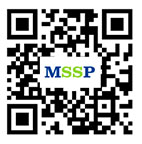(Summary description)1. Chemotherapy It refers to the use of chemical drugs to inhibit or kill pathogenic microorganisms (including viruses, chlamydia, mycoplasma, Rickettsia, bacteria, spirochetes and fungi), parasites and malignant tumor cells in the machine, so as to eliminate or alleviate the diseases caused by them. The drugs used are referred to as chemotherapy drugs for short 。
(Summary description)1. Chemotherapy It refers to the use of chemical drugs to inhibit or kill pathogenic microorganisms (including viruses, chlamydia, mycoplasma, Rickettsia, bacteria, spirochetes and fungi), parasites and malignant tumor cells in the machine, so as to eliminate or alleviate the diseases caused by them. The drugs used are referred to as chemotherapy drugs for short 。
1. Chemotherapy It refers to the use of chemical drugs to inhibit or kill pathogenic microorganisms (including viruses, chlamydia, mycoplasma, Rickettsia, bacteria, spirochetes and fungi), parasites and malignant tumor cells in the machine, so as to eliminate or alleviate the diseases caused by them. The drugs used are referred to as chemotherapy drugs for short 。
2. Antibacterial spectrum It refers to the scope where drugs inhibit or kill pathogenic microorganisms 。
3. Antibacterial activity It refers to the ability of drugs to inhibit or kill pathogenic microorganisms. Drugs that inhibit the growth and reproduction of microorganisms are called bacteriostatic agents 。 The lowest concentration that can inhibit the growth of bacteria in the culture medium is called the minimum inhibitory concentration (MIC). Any drug with the ability to kill microorganisms is called bactericide , The minimum concentration that can kill bacteria in the culture medium is called the minimum bactericidal concentration (MBC).
4. Bacteriostatic and bactericide
Class I germicide in breeding period, also known as rapid bactericide (such as penicillin, etc.) β Lactams);
Class II static fungicides (such as aminoglycosides, polymyxin and bacitracin);
Class III rapid bacteriostatic agents, also known as bacteriostatic agents in breeding period (such as macrocyclic lipids, chloramphenicol and tetracycline);
Class IV slow acting bacteriostatic agents, also known as static bacteriostatic agents (such as sulfonamides).
5. Post antibiotic effect (PAE) It refers to that after bacteria are briefly exposed to antibiotics, although the antibiotic serum concentration drops below the minimum inhibitory concentration or disappears, the inhibitory effect on microorganisms still lasts for a certain time.
6. Chemotherapy index (CI) It is an index for the evaluation of chemotherapeutic drugs , The high chemotherapy index indicates that the drug has low toxicity, high curative effect and high safety. However, those with high chemotherapy index are not absolutely safe. For example, penicillin is almost non-toxic, but it can cause anaphylactic shock. The chemotherapy index was based on animal median lethal dose (LD) fifty ) And the half effective dose (ED) of infected animals fifty ) Ratio of , Or measured by the ratio of 5% lethal dose (LD5) to 95% effective dose (ED95).






